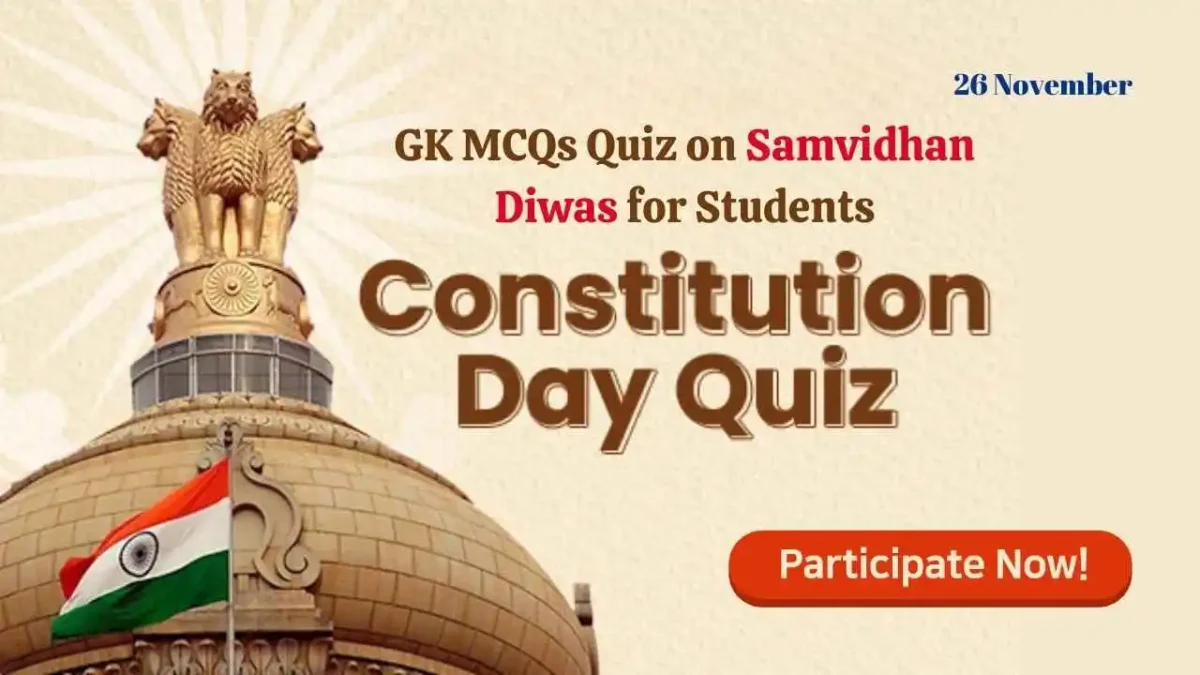Magnetic Effects of Electric Current Quiz Question Answers
Hello Students, Welcome to NCERT Extra Support Segment. In this post, we have gathered 50 of the most important GK general knowledge questions and answers from the “Magnetic Effects of Electric Current” chapter, which is the 12th chapter in the 10th class NCERT Book.
Why do we cover Magnetic Effects of Electric Current in Question Answers?
The study of the entire NCERT Magnetic Effects of Electric Current chapter is easy, but remembering the chapter and its questions can be a bit tough. That’s why we have collected some of the most important Magnetic Effects of Electric Current question answers to help you understand the concepts more easily.
50 Q&A based on the magnetic effects of electric current
Here are 50 simple and engaging general knowledge quiz questions based on the magnetic effects of electric current and related topics:
What does a compass needle indicate?
A compass needle indicates magnetic north and south poles.
What creates a magnetic field around a magnet?
The region around a magnet where magnetic forces can be detected.
What represents a magnetic field in diagrams?
Field lines represent a magnetic field.
What happens to a compass needle near a current-carrying wire?
The needle gets deflected due to the magnetic effect.
Who discovered the link between electricity and magnetism?
Hans Christian Oersted.
What does the deflection of a compass needle near a wire indicate?
That electric current produces a magnetic effect.
What forms around a current-carrying conductor?
A magnetic field forms around it.
What rule determines the direction of the magnetic field around a wire?
The right-hand rule.
What is the shape of the magnetic field around a straight conductor?
Concentric circles around the wire.
What device uses the magnetic effect of electric current?
An electromagnet.
What does Fleming’s left-hand rule describe?
The direction of force on a current-carrying conductor in a magnetic field.
What is the common voltage for AC electric power in houses?
220 V.
What is the purpose of the earth wire in domestic circuits?
It’s a safety measure to prevent electric shocks.
What safety device protects circuits from short-circuiting?
A fuse.
What did Oersted’s experiment show?
The electric current affects a magnetic compass.
Why don’t magnetic field lines intersect?
Because they represent the direction of magnetic force, which can’t point two ways at the same spot.
What happens to the magnetic field as you move away from a current-carrying wire?
The field gets weaker.
What does a solenoid resemble when carrying a current?
A bar magnet.
Class 10 Chapter 12 Magnetic Effects of Electric Current Physics MCQs
What is the direction of magnetic field lines inside a magnet?
From the south pole to the north pole.
What increases the strength of an electromagnet?
Increasing the current or the number of coils.
What is the right-hand thumb rule?
A way to determine the direction of a magnetic field around a current-carrying conductor.
What is the main effect of electric current noted in the chapter?
Magnetic effect.
How does a magnetic field affect a nearby compass?
It deflects the needle.
What indicates the strength of a magnetic field in field line diagrams?
The closeness of the lines.
What changes the direction of a compass needle?
Electric current flowing through a nearby wire.
What did Hans Christian Oersted discover about electric current?
That it can deflect a magnetic needle.
How do magnetic field lines emerge and merge from a magnet?
They emerge from the north pole and merge at the south pole.
What is an electromagnet?
A type of magnet where the magnetic field is produced by an electric current.
What are the safety features in domestic electric circuits?
Fuses, live wire, neutral wire, and earth wire.
How can you increase the magnetic field strength of a solenoid?
By increasing the number of turns or the current.
What happens when the direction of current in a conductor changes?
The direction of the magnetic field changes.
How can you show the magnetic field around a bar magnet?
By using iron filings.
What does a circular loop of wire carrying a current create?
A magnetic field similar to a bar magnet.
Why is the earth wire connected to the metallic body of appliances?
To prevent electric shock by directing any leakage current to the ground.
What is the significance of the magnetic field inside a solenoid?
It is uniform and similar to a bar magnet.
What is the role of the fuse in household circuits?
To protect against overloading and short circuits.
What does the magnetic field around a straight current-carrying conductor look like?
Concentric circles.
What principle does a current-carrying conductor in a magnetic field demonstrate?
The principle of electromechanical force.
What does increasing current in a conductor do to the magnetic field?
It increases the field’s strength.
What determines the direction of the magnetic field around a conductor?
The direction of the electric current.
How is the magnetic field related to the distance from the conductor?
The further from the conductor, the weaker the field.
What is the effect of reversing current direction in a conductor?
It reverses the magnetic field direction.
How does a magnetic field affect a current-carrying conductor within it?
It exerts a force on the conductor.
What is Fleming’s left-hand rule used for?
To determine the direction of force on a current-carrying conductor in a magnetic field.
What safety measure prevents electric shock from appliances?
The earth wire.
What causes the force on a current-carrying rod in a magnetic field?
Interaction between the magnetic fields of the rod and the external field.
What is the effect of a magnetic field on a stationary electric charge?
There is no effect; motion is needed to experience force.
How can the strength of a magnetic field from a wire be increased?
By increasing the current through the wire.
What happens to the direction of force when the magnetic field direction is reversed?
The force direction on the conductor also reverses.
What does a domestic circuit’s live wire carry?
The supply current at 220 V.
25 Most Important MCQs Related to NCERT magnetic effects of electric current Chapter
Magnetic Effects of Electric Current Class 10 MCQ With Answers
1. What does a compass needle show when brought near a bar magnet?
Options: a) Heat effect b) Sound effect c) Magnetic effect d) Light effect
2. Who linked electricity to magnetism?
Options: a) Isaac Newton b) Albert Einstein c) Hans Christian Oersted d) Nikola Tesla
3. What represents a magnetic field visually?
Options: a) Dotted lines b) Field lines c) Straight lines d) Zigzag lines
4. What is the shape of the magnetic field around a straight current-carrying conductor?
Options: a) Straight lines b) Zigzag patterns c) Concentric circles d) Random dots
5. What is used to determine the direction of a magnetic field around a conductor?
Options: a) Left-hand thumb rule b) Right-hand thumb rule c) Right-hand grip rule d) Left-hand grip rule
6. The magnetic field inside a solenoid is…
Options: a) Non-uniform and weak b) Non-uniform and strong c) Uniform and strong d) Uniform and weak
7. Which device uses the magnetic effect of electric current?
Options: a) Battery b) Bulb c) Electromagnet d) Resistor
8. What rule is used to find the direction of force on a current-carrying conductor in a magnetic field?
Options: a) Newton’s third law b) Fleming’s right-hand rule c) Fleming’s left-hand rule d) Coulomb’s law
9. What is the voltage of AC electric power in houses?
Options: a) 110 V b) 220 V c) 330 V d) 440 V
10. What prevents circuits from short-circuiting or overloading?
Options: a) Capacitor b) Transistor c) Fuse d) Inductor
11. The deflection of the compass needle near a wire shows…
Options: a) Gravitational effect b) Thermal effect c) Magnetic effect d) Chemical effect
12. Magnetic field lines close to each other indicate…
Options: a) A weaker magnetic field b) A stronger magnetic field c) No magnetic field d) A reversing magnetic field
13. In the right-hand thumb rule, the thumb points towards…
Options: a) The south pole b) The magnetic field c) The direction of current d) The north pole
14. A solenoid behaves like…
Options: a) A bar magnet b) A non-magnetic material c) An electric field d) A light source
15. What is the primary safety feature in domestic electric circuits?
Options: a) LED b) Earth wire c) Switch d) Battery
16. The magnetic field inside a long straight solenoid-carrying current is…
Options: a) Zero b) Decreases towards its end c) Increases towards its end d) The same at all points
17. The direction of magnetic field lines outside a magnet is from…
Options: a) North to South b) South to North c) East to West d) West to East
18. What happens to the magnetic field if the current through the conductor increases?
Options: a) Decreases b) Remains the same c) Increases d) Becomes zero
19. What material is commonly used to create an electromagnet core?
Options: a) Copper b) Soft iron c) Aluminum d) Gold
20. According to Fleming’s left-hand rule, if the index finger points to the magnetic field direction, the thumb will point to the direction of…
Options: a) Voltage b) Resistance c) Force d) Power
21. The unit of magnetic field strength, the oersted, honors which scientist?
Options: a) Faraday b) Ampere c) Oersted d) Tesla
22. An electric current produces a magnetic field, which was discovered by…
Options: a) James Clerk Maxwell b) Michael Faraday c) Hans Christian Oersted d) Andre-Marie Ampere
23. The force on a current-carrying conductor in a magnetic field is given by…
Options: a) Coulomb’s law b) Ohm’s law c) Fleming’s left-hand rule d) Kirchhoff’s law
24. The magnetic field of a bar magnet is strongest…
Options: a) In the middle b) At the north pole c) Equally throughout d) At both poles
25. A magnetic field can be visualized with…
Options: a) Water b) Iron filings c) Sand d) Oil
Answers 1 – C | 2 – C | 3 – B | 4 – C | 5 – B | 6 – C | 7 – C | 8 – C | 9 – B | 10 – C | 11 – C | 12 – B | 13 – C | 14 – A | 15 – B | 16 – D | 17 – A | 18 – C | 19 – B | 20 – C | 21 – C | 22 – C | 23 – C | 24 – D | 25 – B |
10 Fill in the Blanks for NCERT magnetic effects of electric current Chapter
- A __________ shows the direction of magnetic north.
- Electricity and magnetism were proven to be related by __________.
- The magnetic field around a current-carrying wire is visualized with __________.
- The __________ rule helps determine the direction of the magnetic field.
- Inside a magnet, magnetic field lines move from __________ to __________.
- A __________ is used in domestic circuits to prevent short-circuiting.
- The strength of the magnetic field is indicated by the __________ of the field lines.
- __________ discovered that an electric current produces a magnetic field.
- Fleming’s __________-hand rule is used for finding the force direction on a current-carrying conductor.
- The magnetic field of a solenoid is similar to that of a __________ magnet.
Answers:
- compass needle
- Hans Christian Oersted
- iron filings
- right-hand thumb
- south pole, north pole
- fuse
- closeness
- Hans Christian Oersted
- left
- bar







